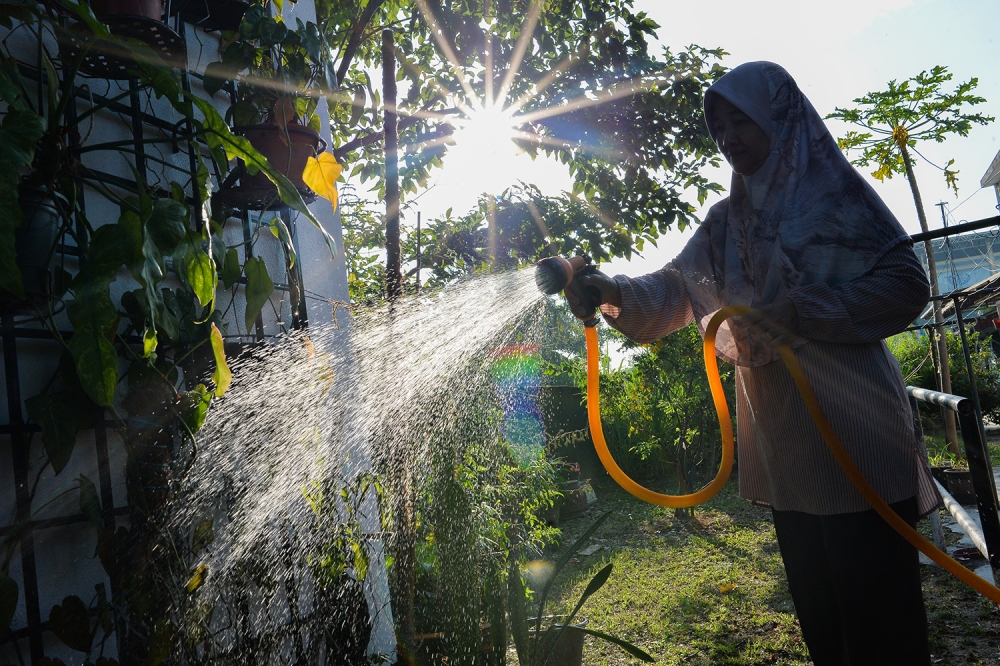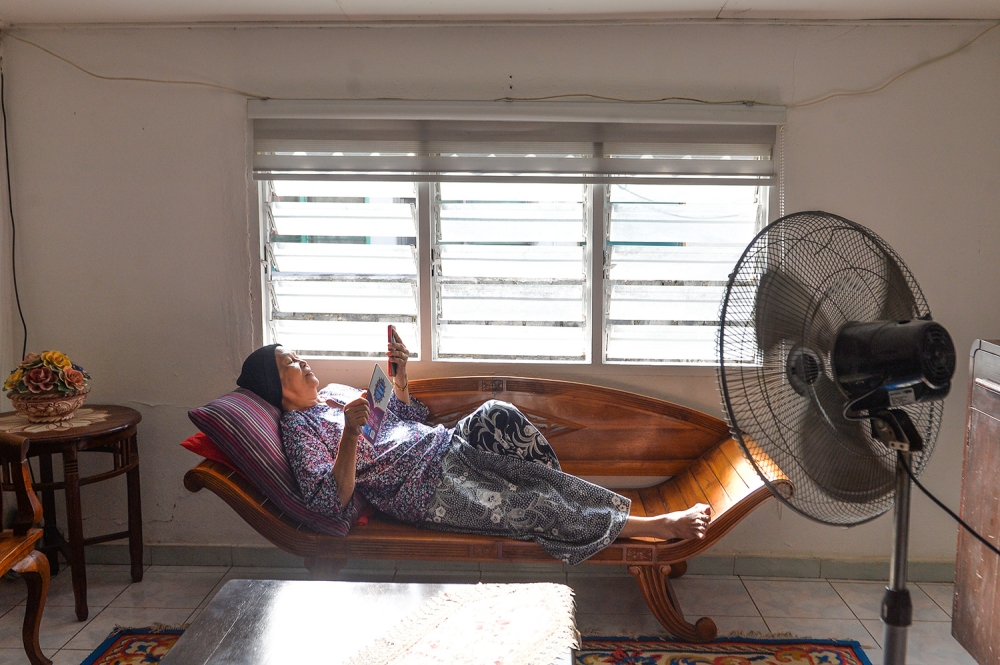KUALA LUMPUR, May 29 — A scorching heat wave sweeping Malaysia and the region has triggered discussions of a possible Emergency declaration to help those in the worst-affected areas cope with the phenomenon.
This has also created interest in what would be needed to trigger such an Emergency, as this would allow Malaysians to prepare for such a declaration.
While the Federal Constitution empowers the Yang di-Pertuan Agong to declare an Emergency when he believed there to be a grave threat to the country’s “security, or the economic life, or public order,” it does not specify how this would apply to a situation such as a heat wave.
Instead, the parameters must be determined by the federal government, such as when the decision was made in 2019 to set an Air Pollutant Index (API) reading of 500 as the threshold to declare an Emergency at haze-hit locations.
What warrants an Emergency?
While the current temperature peaks in some parts of the country were unprecedented, heat waves have become an increasing phenomenon here, due in part to climate change across the globe.
A previous heat wave in 2016 had prompted similar concerns, moving the government at the time to form a multi-agency task force specifically to formulate a response plan.
This included setting the previous threshold for a declaration of Emergency, which was first set at the time as seven straight days of temperatures in excess of 40 degrees Celsius.
The task force was also responsible for the four-tier alert system that ranged from Level 0 with a temperature below 35 degrees Celsius to the highest Level 3, which also lowered the threshold for an Emergency to a 72-hour period of 40 degrees Celsius or greater.
Occupational and public health professor Dr Victor Hoe Abdullah of the Universiti Malaya explained that a heat wave Emergency would be declared when extreme heat poses substantial risks to public health, infrastructure, agriculture, and the population's overall well-being.
“The government has indicated that a state of Emergency will only be declared when the temperature reaches 40 degrees Celsius because, at this temperature, there will be a higher risk for people to develop heat-related complications, especially those working outdoors.
“The MetMalaysia monitors the temperature and classifies the districts based on the three-day average temperature,” he told Malay Mail.
According to Dr Hoe, Level 1 on the tiered system, also known as a yellow alert, would be issued when the daily maximum temperature was between 35 degrees and 37 degrees Celsius for a minimum of three consecutive days.
This would rise to Level 2, an orange alert, if the daily maximum temperature was between 37 degrees and 40 degrees Celsius, also for three straight days.
Dr Hoe also said that an Emergency would enable the government to restrict outdoor activities and deploy additional resources to mitigate heat-related complications.
“However, there is a difference between the state of Emergency and what the Climate Emergency Coalition of Malaysia is proposing to the government, which is to declare the situation as a climate Emergency.
“In their proposal, they want the government to take concrete steps to address the impact of climate change,” he said.

What would happen in a heat wave Emergency?
In 2016, under the tiered alert system, schools in areas that reached Level 2 — the second highest — were closed to students for the duration of the heat wave, but not to teachers and other employees.
However, the task force at the time had not announced measures to be taken upon reaching Level 3, only saying that the National Disaster Management Agency (Nadma) would advise the prime minister to seek a proclamation of Emergency.
Dr Hoe said that if a heat wave Emergency were to be declared, the public’s social and work activities would likely be curtailed.
“The government will try to limit people going and working outdoors or impose certain conditions for people working outdoors. This will limit the exposure of people to direct heat from the sun.
“However, even without the declaration of a state of emergency, the government has already implemented certain measures, for example, the Education Ministry has issued a directive to limit outdoor activities among school children,” he said.
On May 5, the Education Ministry ordered a stop to all outdoor activities in schools, including cross-country running and directed that all studies be conducted in classrooms.
Public health expert Dr Sharifa Ezat Wan Puteh of Universiti Kebangsaan Malaysia also agreed that limiting outdoor activities in a heatwave Emergency would help reduce the risk of heat stroke and dehydration, especially for the elderly and young children.
It would also allow those who would otherwise have to work outdoors from being forced out into the scorching heat.
“Declaring emergency will help people who are constantly exposed to sun or heat for long hours to work from home or be in cooler places,” she said.
However, Dr Sharifah Ezat said that an Emergency could have significant repercussions for agriculture and the country's economy.
“People will witness crop failures, reduced yields, food scarcity and increased food prices due to withered crops.
“Food scarcity will also lead to food security issues, especially if food vendors started to hide certain foods from the population and this could be a situation they have to face as well,” she said.
She also said that an Emergency would only treat the symptom and was not a permanent solution to the causes of this and future heat waves.
“We are not really dealing with the crisis, we are only minimising the risk. People don’t get exposed to heat so much when working or going to school, but it doesn’t really solve the problem,” she said.

Ways to cope with the heat wave
Even before an Emergency, Dr Sharifah Ezat said the government should ensure there was ready access to healthcare, especially for those at higher risk such as the very young and very old.
“The government also needs to make sure that the water supply is not being disrupted because water is very important in this heated environment,” she said.
Dr Hoe recommended drinking enough water, particularly to those involved in outdoor activities and working or playing in a shady and cool environment.
He also said that it was important to rest and take regular breaks in a cool area, especially during strenuous physical activity or when working in a hot environment.
“Plan outdoor activities wisely, if you must be outdoors, schedule your activities at cooler times of the day, such as early morning or evening. Avoid prolonged exposure to the sun and try to find a dim area.
“Wear loose, light and brightly coloured clothing that allows air circulation and helps sweat evaporate and a wide-brimmed hat to protect yourself from the sun’s harmful rays,” he said.
He further advised paying attention to weather forecasts and heat advisories, and to take precautions as needed.
The public should also be careful when taking medication as some drugs could increase the risk of heat-related illness.
“Pay attention to infants, young children, older adults, and individuals with chronic illnesses, as they are more susceptible to heat-related illnesses. Make sure they are adequately hydrated and have access to a cool environment,’ he said.
On May 16, Deputy Prime Minister Datuk Seri Ahmad Zahid Hamidi said there was not yet a need for Malaysia to declare a heatwave Emergency, but the government would review this if temperatures reached 40 degrees Celsius.
Before that, the Malaysian Meteorological Department (MetMalaysia) had issued Level 1 alerts for several areas where temperatures had breached 35 degrees Celsius for three days.






















